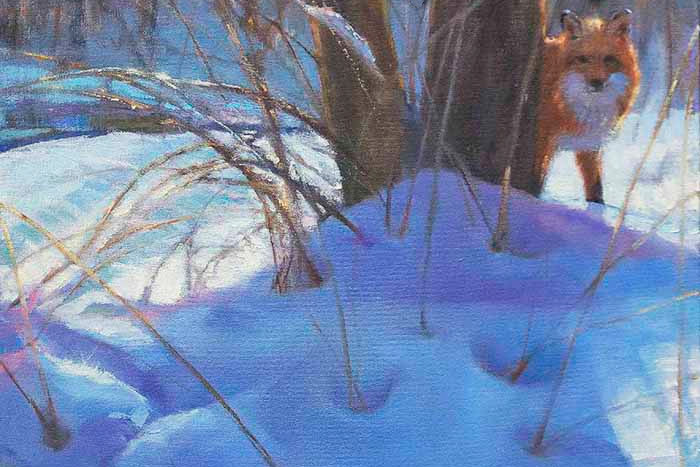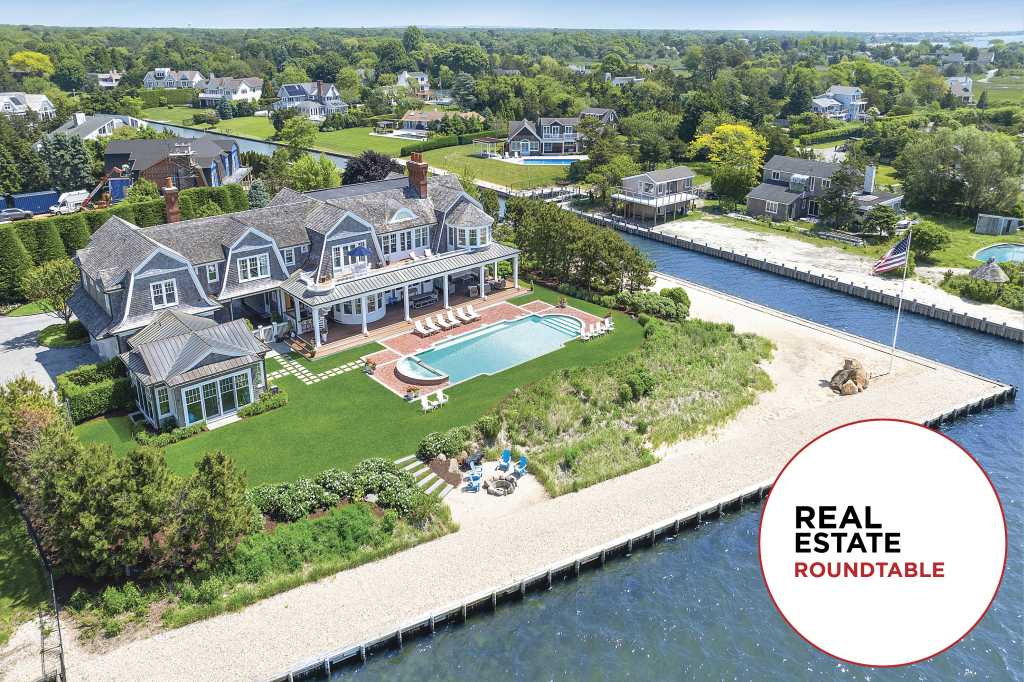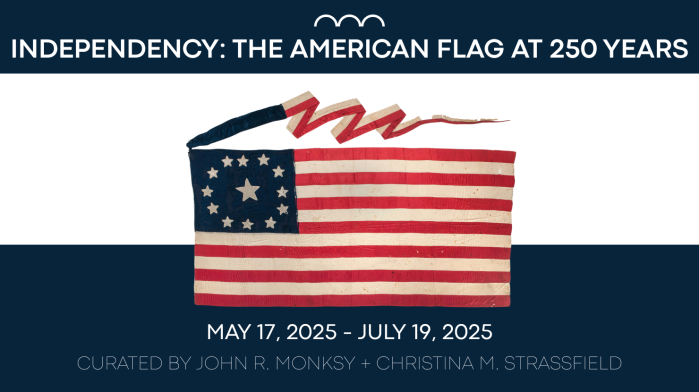A Chat with Dan's Papers Cover Artist Elizabeth Kolligs

Although she’s known—and admired—for her luminescent oil paintings of horses, Elizabeth Kolligs wants to talk about the fox in this week’s cover painting, “Fox at Shu Swamp.” Shu is a Dutch word that means “cascading water,” and Shu Swamp is in Mill Neck in Nassau County. The 20”x 14” painting contrasts a fox, which is backlit by a contour of sun; and the blue-cold snow—all the colder for the late-afternoon blue shadow—evoking a sense of chance discovery of a lone animal in the woods.
So much of nature has been and is being lost, the artist points out, as rural America succumbs to development—foxes gone, horse trails that used to meander through old Long Island estate properties, obliterated. Kolligs’ art would pay homage to what remains—in her words, “streams lined with ferns opening up to grassy fields”—and to foxes, “significant animals with a distinct screaming bark.” Some years ago, she found a taxidermy fox on a curb and took it back to her studio, and soon after that she found a dead fox in the road and took this back, too, later burying both together, as a kind of honoring.

When did you become a painter of animals?
I grew up in Glen Cove around horses and started riding lessons when I was eight. I got a horse of my own when I was 16. But I always loved to draw horses, barns, jumps, paddocks. I no longer ride. I have a B.A. in painting from the New York Institute of Technology in Westbury, but it wasn’t until I was 30 that I started painting seriously. I had a job in the city as a carpet designer and then a job I still love working as an art conservation technician, restoring historic murals [in post offices, museums, etc.] Once I got serious about painting, I enrolled in The Art Students League. I also studied equine anatomy at the New York Academy of Art and I sculpted horses at the Fechin Institute in New Mexico. I was commissioned by the Old Westbury Horseman’s Association to do a life-size horse in fiberglass, which was exhibited throughout Nassau County and at the Belmont Park stakes in 2003. Horses have an intensely generous nature. They seem to have magical gifts, telepathic communication with those who love them, as I do. I recall times when I had a sudden vivid image of a horse lying ill, and I would race to the barn and it was so.
What do you make of the special bonding between girls and horses?
At the age I started riding and drawing horses, fantasy and reality blended. Perhaps it’s their size, the earthy colors of their coats and the freedom they represent that make horses a universal archetype for independence. Control is a big thing in a young girl’s life and because horses are so responsive and so satisfying to work with, they fill a need that in turn helps develop intuition, sensitivity and self-esteem. Horses are large animals, powerful and masculine. Working with them can wonderfully soften the edges of the yet-undiscovered bigger world of uncertainty. A horse is also an absolutely beautiful animal. Sitting atop such elegance evokes great satisfaction and admiration from others. History teaches us that horses were used for transportation, war and agriculture. These are not the first things a girl thinks about when seeing a horse. She sees a teammate who can offer her freedom and movement.
Elizabeth Kolligs is represented by Ariel Fine Art in Locust Valley. Her work can also be seen at Old Field Farm Ltd. in Stony Brook, a restored Suffolk County park historical horse show grounds, where she is an artist in residence, exhibiting and giving painting demonstrations. Around Easter, tourists to The White House Visitor Center in Washington DC can see the Easter Egg she painted in 2005, when she was the New York State artist selected to decorate an egg with home state imagery. For more information, visit elizabethkolligs.com.









